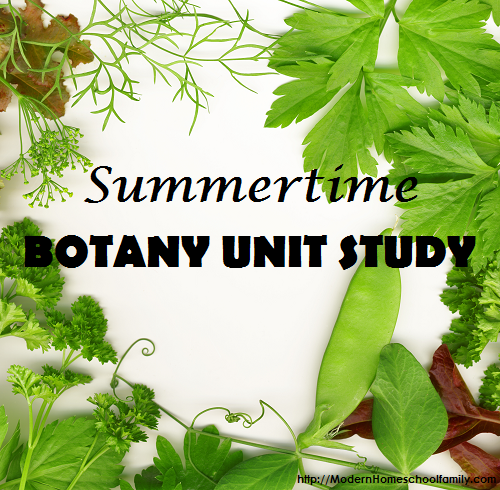A guest post by Jessica Hulcy.
On the first day of class, my Botany professor at the University of Texas held up a tomato and informed the class, “Every time you eat a tomato, remember you are eating a ripe ovary.” Ugh! That was information I could have done without! But admittedly, I was intrigued by this off-the-wall professor.
His teaching style was equally unconventional as we chased him through meadows and along roadsides, keeping up with him as we gathered wildflowers that he pointed out and scratched his every word in our notebooks while walking. In Texas, the state flower is the bluebonnet or more specifically Lupinus texensis . . . and, of course, there is a state law against picking them. Naturally, our professor had been picking bluebonnets one day when a state trooper attempted to ticket him . . . until the professor challenged the officer as to whether the picked flower was Lupinus texensis, the true state flower, or Lupinus havardii, a look-alike. The officer finally tore up the ticket. I loved this professor’s teaching and learned as much from him about how to teach as I learned about botany.
Collect, Compare, and Categorize
First, you collect plant specimens and press them in a phone book or plant press, and then you begin to study and compare them, noticing all their similarities and distinctives. Comparing finally creates categories, which turn out to be plant families. My college professor taught us this rule: “Do not obsess over grouping plants by genus and species but rather examine and group plants by like characteristics to find the plant families.” I followed his lead years later when I wrote a unit study on plants1 but with a twist—the incredible similarities were all a part of God’s incredible design!
Members of the grass family, the most important economic family to man, all have hollow stems, tiny flowers, and parallel veined leaves, from crabgrass to bamboo to wheat to oats to corn to rice to sugar cane. The mint family members have square stems and usually have a strong odor: mint, basil, rosemary, sage, and lavender. The rose family does not simply include the thorny beauties, but it includes all those edible fruits such as strawberries, apples, pears, peaches, and cherries. Members of the rose family have five petal flowers coming from a floral cup that develops into a fruit like the fruit rose hips! The pea or legume family has flowers that look like a mouth and seeds that grow in pods, such as beans, peas, peanuts, bluebonnets, wisteria, and mesquite trees.
Composites or Asteraceas make up the largest family in the world and are actually a number of tiny flowers clustered together to look like one flower. When you give a daisy, a sunflower, a mum, a dandelion, or a thistle, you are essentially giving a bouquet of flowers in one flower— a very economical bouquet!
Eat and Review
As you learn about plant families, it is always fun to cook and eat representatives of each family. Summertime is a great time for salads, and salads can provide great review of not only plant parts but also of what family each plant comes from. Start building your review salad with lettuce or leaves from the Composite family. Next, add flowers from the Cruciferae family by adding pieces of broccoli and cauliflower plus roots and stems from the Mustard family with sliced carrots and celery. No salad would be complete without tomatoes and sliced bell peppers, both fruits or ripe ovaries, from the Nightshade family. I personally like to add marinated buds from the Composite family by adding artichokes. Even the olive oil dressing is squeezed from the olive fruit and seasoned with a bulb or enlarged stem from the Lily family called garlic. Salad . . . not only good for your body, but a good test for your mind!
Recline, Read, Think Deep
Poetry provides wonderful literature to accompany your plant unit. Tons of poems about flowers, plants, grass, and even weeds are found in my poetry anthology of choice, Favorite Poems Old and New by Helen Ferris, from the Bible to classics to humorous poems—all perfect for children’s minds and hearts. Teach poetic devices such as personification, similes, metaphors, symbolism, and synecdoche to kids of all ages as they appear in a poem rather than teaching them as separate, independent lessons.
The meat and meaning of poetry speak to the heart and are worth mulling over, as in “Flower in the Crannied Wall” by Tennyson. In that poem, the poet tries to understand the complexity and beauty of a simple flower, recognizes his inability to understand something so wonderful, and surmises if he could understand a flower, he also would be able to understand God and man. This is a complete theology lesson fit for a seminary student—in a poem! What worthy thoughts to ponder as you read and recline on a summer day.
Endnote:
- KONOS Orderliness unit.
Jessica Hulcy, co-author of KONOS Curriculum, the first curriculum written for homeschool, is an educator, author, and formerly popular national homeschool speaker prior to her near-fatal wreck in 2009. A graduate of the University of Texas, mom to four grown sons, and “Grandear” to grandchildren, Jessica lives with her husband Wade on acreage in Texas. Recently Jessica and Wade started the ultimate online help for homeschooling moms called Homeschool Mentor. Visit www.homeschoolmentor.com and www.konos.com.
Copyright 2012, used with permission. All rights reserved by author. Originally appeared in the June 2012 issue of The Old Schoolhouse® Magazine, the family education magazine. Read the magazine free at www.TOSMagazine.com or read it on the go and download the free apps at www.TOSApps.com to read the magazine on your mobile devices.






